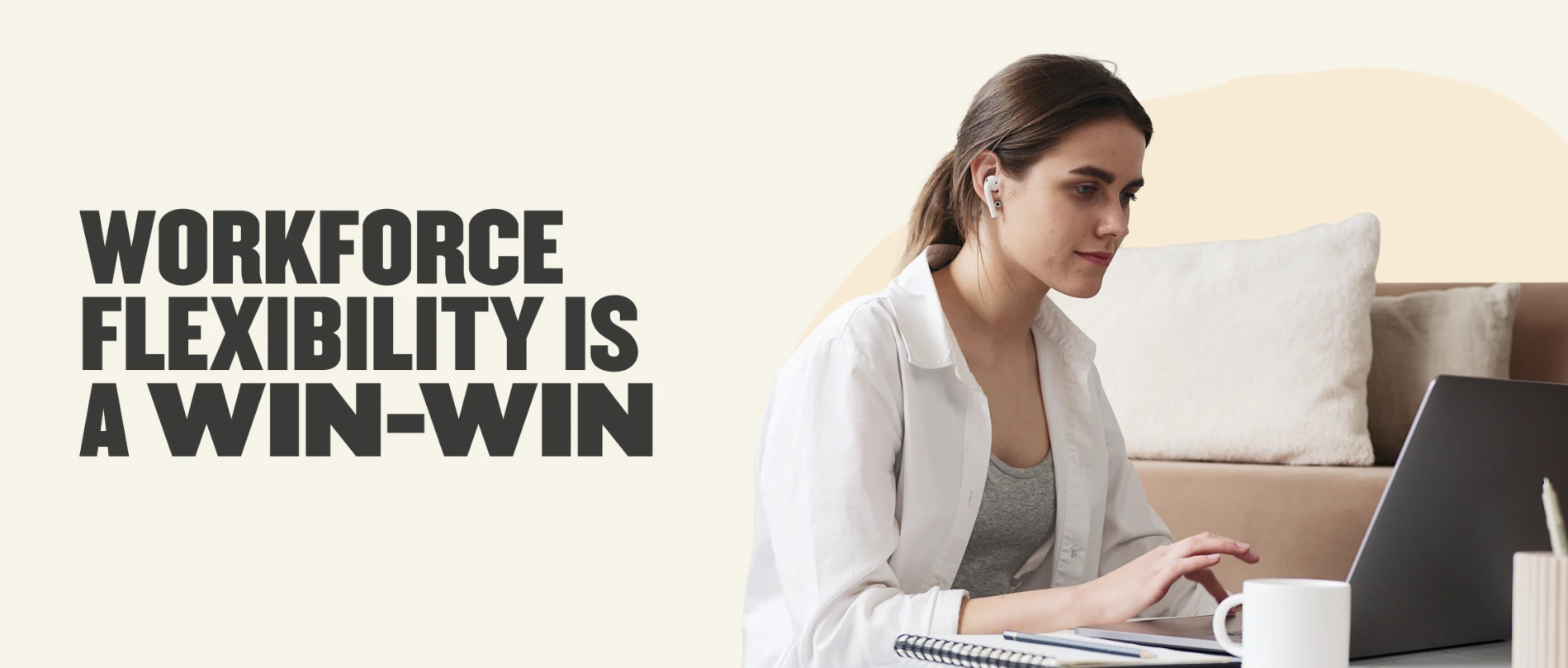HR professionals are now responsible for navigating tightening resources, rapidly-advancing technologies, and a workforce that cares more about positive work experiences than their salary. According to the Harvard Business Review, 96 percent of professionals in the US want flexibility at work, but only 47 percent of them get it. Many are leaving their jobs because their companies refuse to adapt.
The mass exodus of people from their full-time jobs, dubbed the Great Resignation, has made keeping up with the workforce more challenging than ever. Modern companies aiming to stay ahead of their competition know that they must hire and retain the most talented people to succeed.
It’s also important to note that most people quitting are taking the talent, skills, and experience modern companies need with them. These people have withdrawn from the pool of full-time candidates and reinvented themselves as freelancers and independent contractors.
Why modern companies need flexible work structures
Today’s market is talent-driven. People are demanding more flexibility and autonomy, better work-life balance, and better benefits. Many companies are shifting to flexible, hybrid work models to remain competitive.
Defining a “flexible work model” for your organization can be tricky. It can look different depending on an organization’s size and industry. On the other hand, it’s important to understand that flexibility entails more than a few new policies and programs. It’s an entirely new way of conducting business. Workforce flexibility should align with the needs of individual organizations, prioritize trust in their people, and be a key component of the organization’s business strategy.
Flexible work models have proven to benefit organizations across every sector and help:
- Diversify your talent pool: Greater flexibility supports diversity in the workplace. Rigid working hours and narrowly-defined skills and training requirements exclude some of the most remarkable talent available. For example, flexible work models can enable students and parents to return from parental leave part-time, and allowing remote work can open your doors to talent regardless of location.
- Boost productivity: Flexible work isn’t just something people prefer. Multiple studies show that workforce flexibility and remote work models “incrementally increase productivity,” reduce stress, and boost job satisfaction.
- Streamline your processes: Flexible work models enable companies to do more with less. WFH provides people with an environment where they can increase their concentration, reducing the time it takes to meet and exceed goals. Hiring freelancers and contractors for specific, short-term projects can significantly reduce overhead and the cost of overtime and absenteeism associated with onsite, salaried employees.
- Forge stronger team relationships: Workforce flexibility gives people more opportunities to collaborate with teammates from across the organization on various projects. It also creates a dynamic environment that fosters stronger cross-team connections and shows people the organization trusts them. This is one of the main reasons organizations with flexible work models benefit from higher employee engagement, loyalty, and diversity, according to HBR.
Recommended For Further Reading
The bottom line: Workforce flexibility is a win-win
Flexibility was forced on organizations worldwide by the COVID pandemic. The advantages of flexible work models are nearly endless. The question now is if your organization is ready and able to adopt flexibility for the long term.
Flexible work makes it possible to harness the unique talents of just about anyone from any walk of life, from anywhere in the world. Offering people flexibility at work is a great way to diversify your workforce, increase employee engagement and happiness, reduce stress, and stay competitive in today’s talent-driven market.


